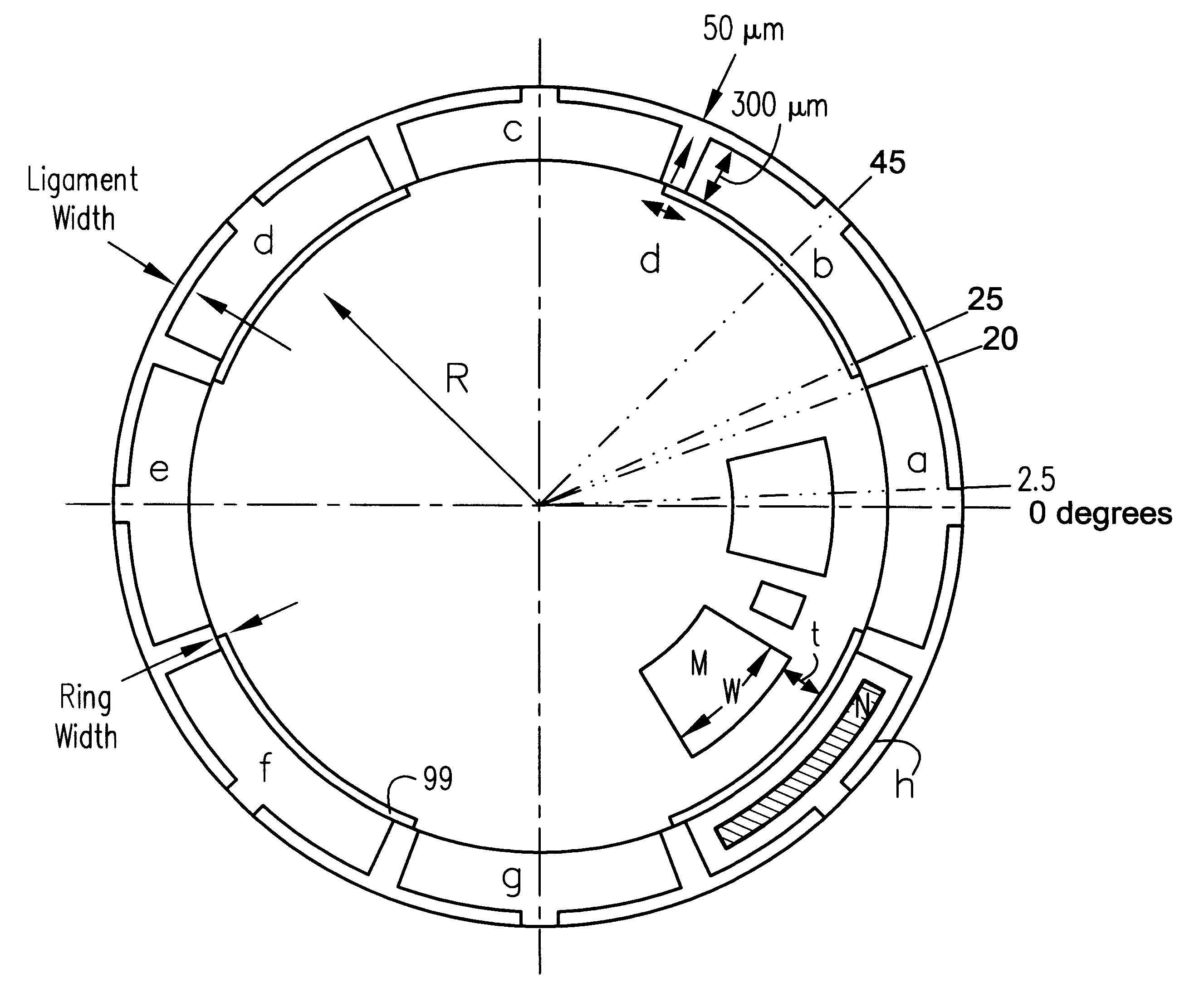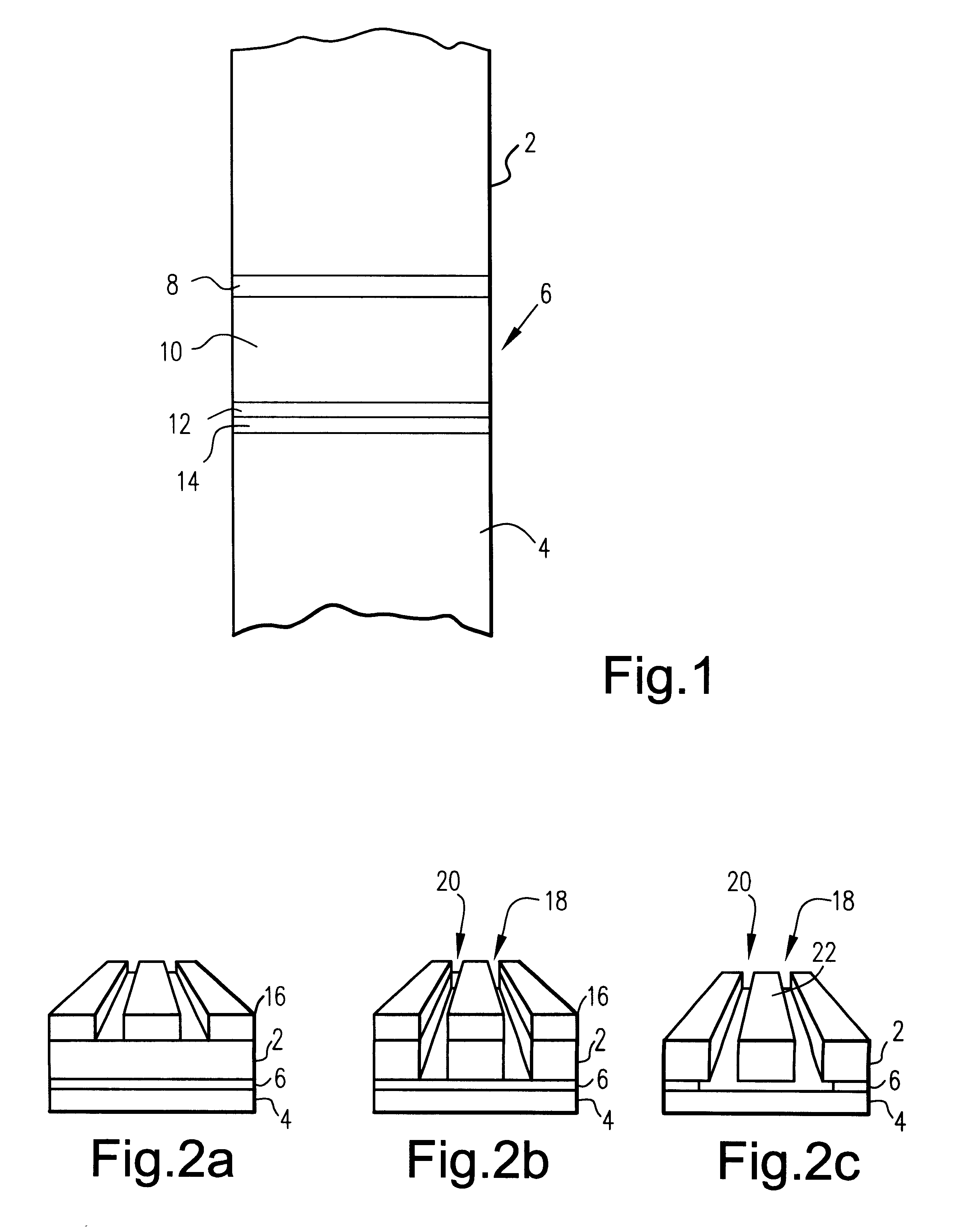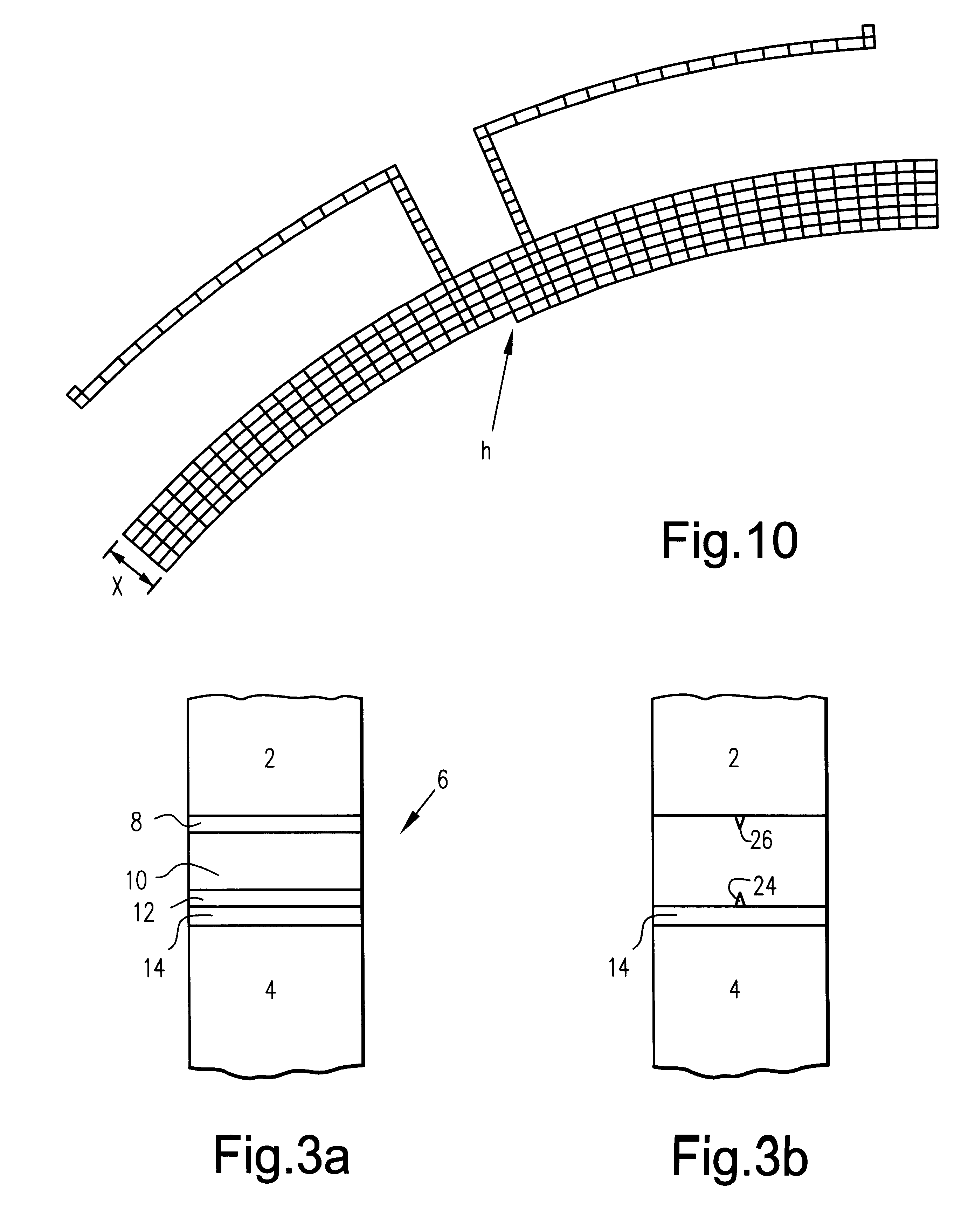Micro-machining
a micro-machining and micro-machining technology, applied in the direction of acceleration measurement using interia force, turn-sensitive devices, instruments, etc., can solve the problems of layer delamination, difficult control of material uniformity, and inability to reliably deposit materials, etc., to offset the higher cost of wafers
- Summary
- Abstract
- Description
- Claims
- Application Information
AI Technical Summary
Benefits of technology
Problems solved by technology
Method used
Image
Examples
Embodiment Construction
with reference to the accompanying drawings of which:
FIG. 1 shows a cross section through two silicon wafers separated by a plurality of insulating layers;
FIGS. 2a to c shows stages in the production of a micro-mechanical sensor according to the invention;
FIGS. 3a-b shows the principle involved in reducing the stiction between two wafers;
FIGS. 4a-b shows the stages in a different process to that shown in FIG. 2 of the production of a micro-mechanical sensor;
FIGS. 5a-e shows a schematic for a further process flow for the production of a micro-mechanical sensor;
FIG. 6 shows a scanning electron microscope picture of a micro-mechanical sensor formed according to the present invention;
FIG. 7 shows a scanning electron microscope picture of a feature of the sensor of FIG. 6;
FIG. 8 shows a schematic structure of a gyroscope according to the present invention;
FIGS. 9a and 9b show the primary and secondary modes of vibration of the gyroscope of FIG. 8 respectively; and
FIG. 10 shows a portion ...
PUM
 Login to View More
Login to View More Abstract
Description
Claims
Application Information
 Login to View More
Login to View More - R&D
- Intellectual Property
- Life Sciences
- Materials
- Tech Scout
- Unparalleled Data Quality
- Higher Quality Content
- 60% Fewer Hallucinations
Browse by: Latest US Patents, China's latest patents, Technical Efficacy Thesaurus, Application Domain, Technology Topic, Popular Technical Reports.
© 2025 PatSnap. All rights reserved.Legal|Privacy policy|Modern Slavery Act Transparency Statement|Sitemap|About US| Contact US: help@patsnap.com



